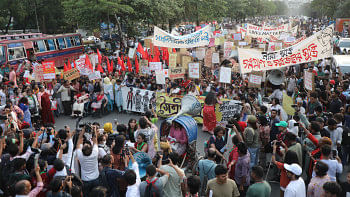Basket Case to Breadbasket: Story of Pala, Plassey, Pakistan and Paltan

Muhammad Bin Qasim entered Sindh in 711AD, thus becoming the first Muslim invader in India. Many of us know the date and celebrate the event. About the same time, one Gopala was elected a king by the tribal chiefs of our region, but few among us know that, and almost none of us celebrate it. Yet, his and his successors' rule saw the golden age of Bengal.
This narrative starts with the first of the Palas, Gopala, elected as the king by the chieftains in the region following a period of turmoil. His capital was Gaur, near present-day Rajshahi, and his kingdom was later to become an empire covering almost the whole of the Gangetic valley. That empire lasted four centuries. They were Buddhists, with messages of tolerance and inclusiveness and, like us, the region's natives.
Their rule was marked by all the hallmarks of enlightened guardianship. They re-established peace and order. The celebrated centre of learning at Nalanda flourished under their rule. They carried Indian/Buddhist culture across the seas to East and Southeast Asia. Atish Dipankar (980-1053), one of the luminaries who lived during this period, had lit up not only India, but he was also celebrated across the whole of East Asia—from Tibet to Korea. He was born in the greater district of Dhaka. His ashes were preserved in China for a thousand years until they returned home when they were presented to Bangladesh in the 1970s. They now remain preserved at the Buddhist temple in Kamalapur.
Fast forwarding almost a thousand years found Bengal as a vassal state of the Mughals, ruled by alien Nawabs. In the narrative of the time of Plassey, history doesn't mention any Bengali of eminence! They, somehow, fell off the stage in their own land. It was all about Mir Jafar and Mir Qasim, Siraj ud-Daula and Shuja ud-Daula, Jagat Shet and Nagar Shet, etc. They came from all kinds of places—Marwa, Afghanistan, Persia, Arabia, South India—but none from Bengal. Where were the natives—the progenies of the Palas, the rulers of that empire, heirs to Atish Dipankar's message of inclusiveness?
Fast forward further, this time around a hundred years, to 1857, when another defining event occurred, the sad consequence of which we were to reap a hundred years later. By then, a company, housed in an unpretentious, three-storey, five-window-fronted house in London, had conquered India with the armies of the three presidencies of Bombay, Madras and Bengal, among which Bengal was the largest, and whose ranks were filled with sepoys mainly from Bengal/Bihar. The so-called Mutiny, which started in Barrackpore, was sparked by a sepoy of the Bengal Native Regiment and then spread fast westward. The British had to scramble to raise forces to suppress it. They found fertile grounds and willing recruits among people further west in India. The British were, therefore, indebted to them. The empire had been saved. Thereafter arose the moniker "Martial Races" (See the footnote below for more information, taken from Wikipedia). And, as a reward, in less than 10 years, Punjab was transformed by the construction of large irrigation systems—among the largest in the world at that time. Soldiers from Bengal/Bihar, no longer considered loyal enough, found their fortunes ebb in the British Army and were replaced by recruits from the western parts—parts considered more loyal. The result was that at the time of Partition about a century later, the Muslim part of the British Army which fell to the share of Pakistan consisted almost entirely of soldiers from what became West Pakistan. And since, from its very beginning, power in Pakistan flowed out of the barrel of the gun; the fate of Bengalis had been sealed by the events of 1857.
The loot of India by the British morphed into the loot of Bengal by the Pakistanis. The new Kiplings and the Dyers were now brown: the Ayubs, the Yahyas, and the Tikkas—the Martial Races. They had the guns in their hands and the belief that they had God in their corner—a toxic mix, indeed. But, like Gopala a thousand years ago, another leader was elected who completed the arc of history by his declaration at Paltan. The natives were back.
This year, the natives celebrate 50 years of that return and a hundred years of the birth of the leader, Bangabandhu Sheikh Mujibur Rahman, who made that happen, again with the message of inclusiveness, shared values and prosperity, having transformed the country from a "basket case" to a breadbasket.
Footnote: According to modern historian Jeffrey Greenhunt on military history, "The Martial Race theory had an elegant symmetry. Indians who were intelligent and educated were defined as cowards, while those defined as brave were uneducated and backward." According to Amiya Samanta, the Martial Race was chosen from people of mercenary spirit (a soldier who fights for any group or country that will pay them), as these groups lacked nationalism as a trait. British-trained Indian soldiers were among those who had rebelled in 1857 and thereafter, the Bengal Army abandoned or diminished its recruitment of soldiers who came from the catchment area, and enacted a new recruitment policy that favoured the castes whose members had remained loyal to the British Empire.
Kazi M Huque is a retired engineer and a former director of BCL Associates Ltd.

 For all latest news, follow The Daily Star's Google News channel.
For all latest news, follow The Daily Star's Google News channel. 



Comments